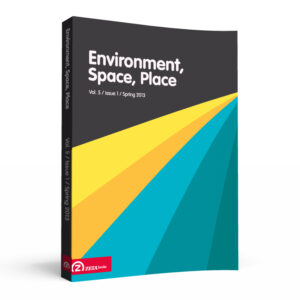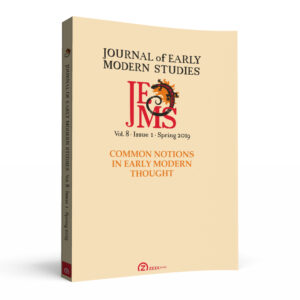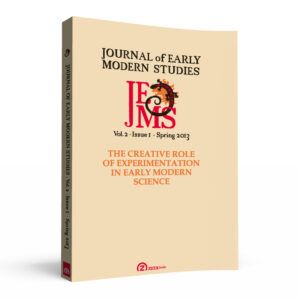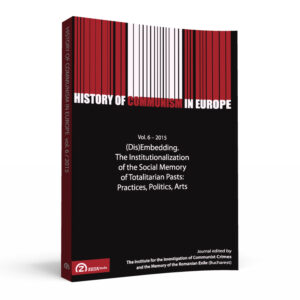CONTENTS
Sean S. MILLER: An Examination of the Burgeoning Green Schools Movement in the United States: Part One: Historical and Contemporary Relevance
- ABSTRACT: This article seeks to introduce the topics of green schools and sustainability education to the reader as the first article in a series of pieces on such subject matters. With respect to the first essay, the modern historical development of sustainability related education is assessed through the lens of its roots in both the U.S. educational system and the environmental movement. Furthermore, many of the purported benefits of green school construction practices are examined subsequently given their relative importance and popularity with respect to the topic. Finally, a brief but important examination is proffered per several of the philosophical ramifications of these efforts in an effort to further develop the understanding and discussion of such topics and the related series of articles.
Peter NEKOLA: Looking Back at the International Map of the World
- ABSTRACT: This article takes a look back at the historical and philosophical context of the International Map of the World, humans’ first attempt at mapping the entire surface of the earth in detail on a uniform scale. Albrect Penck’s initial idea for a thoroughly detailed topographic map of the world, proposed at Fifth International Geographical Conference in 1891 and securing the support, both symbolic and financial, of many of the world’s governments by the first decades of the twentieth century, consisted of a uniform series of hypsometrically-colored topographical maps overlaid with human data (urbanized areas, railroads, and other infrastructure, primarily) and dividing the world into consistently-scaled quadrangles. Envisioned by some geographers and cartographers as a component of the peace, both following both the First and then the Second World War, the project would come to be administered by international and non-governmental organizations by midcentury, as primary governmental support for cartography at that time increasingly reflected territorial interests and claims over and above those in favor of employing concepts of geographical knowledge that were not explicitly political or territorial. The slow demise of the project can be understood to signify the ultimate difficulty of a project that disacknowledged the fundamentality of politically constructed boundaries by employing another scale, in this case, a geometric scale with systematically geographical content, in order to frame its maps.
Kip REDICK: Profane Experience and Sacred Encounter: Journeys to Disney and the Camino de Santiago
- ABSTRACT: This essay explores the contrast of pilgrimage and tourism as sacred and profane journeys using Disney World and the Camino de Santiago as exemplars of such destinations. An entanglement of place structures reveals Disney World as a quasi-religious journey site for some whose tourist actions implicate a ritual centered on capitalist mythology. Disentangling sacred encounters and profane experiences demonstrates the role such places play in elevating community versus self-indulgence.
Troy R. E. PADDOCK: “No Man’s Land”: Forbidden and Subversive Space in War
- ABSTRACT: This article explores one of the iconic spaces of the Western Front of the Great War: ‘No Man’s Land.’ It offers an explanation of why one of the most extraordinary events of the First World War, the Christmas Truce of 1914, was only possible in that space. The paper suggests that the subversive nature of the truce required undermined the legitimacy of the state and thus forced state authorities to suppress further similar occurrences. One of the enduring images of World War I is that of trench warfare, featuring two dug-in-sides firing at each other across a space than spanned anywhere from sixty to two hundred yards. The space that was fired across, dubbed ‘No Man’s Land,’ became an iconic symbol representing the destructive nature of the Great War. This article explores why one of the most extraordinary events of the First World War was only possible in that space and why the event could never be duplicated.
Matthew DEMERS: Theoria: Travel as Paraphor
- ABSTRACT: Theoria originally implied a kind of active observation, combining perception with asking questions and listening to local stories and myths. This is travel treated not as a metaphor in discourse, but as both source and goal of discourse, or movement as a format for conveying information seen and heard. This would be travel as paraphor or travel and discourse carried one alongside the other as a context for intellection. This paper articulates travel as paraphor using Greg Ulmer’s concept of the ‘popcycle’ to analyze the architect Le Corbusier’s ecstatic moment in the monastery at Val d’Ema, outside Florence, revealing the spatial practice of theoria within the architect’s travel tour.
Special Topic: The Seasons Guest
Editors: David MACAULEY and Luke FISCHER
David MACAULEY and Luke FISCHER: Introduction
John Charles RYAN: Toward a Phen(omen)ology of the Seasons: The Emergence of the Indigenous Weather Knowledge Project (IWKP)
- ABSTRACT: Since European settlement, the Western calendar has insufficiently accounted for the seasonal nuances and multiple temporalities of Australia. Beginning with Tim Entwistle’s recent proposal to revise the four-season Australian norm, this article traces the emergence of the Western calendar in Europe and its institutionalization ‘Down Under.’ With its emphasis on land-based calendars, the Indigenous Weather Knowledge Project (IWKP) is a partnership between Aboriginal communities and the Bureau of Meteorology aimed at preserving and promoting knowledge of the endemic seasons of Australian regions. As the most recent addition to the IWKP, the six-season Nyoongar calendar of the South-West of Western Australia is based on meteorological conditions (ecological time), such as wind directions and temperatures, but also on the procurement of food, maintenance of cultural knowledge, and performance of ceremonies (structural time). Through the fusion of phenomenological (experiential, sensory, place-based, actual) and phenological (cognitive, visual, enumerative, digital) approaches, the endemic seasons of Australia can be appreciated in their depth and extent.
Tom BRISTOW: Climatic Literary Geoinformatics: Radical Empiricism, Region, and Seasonal Phenomena in John Kinsella’s Jam Tree Gully Poems
- ABSTRACT: John Kinsella’s twentieth volume of poetry is laden with a poetics of attention to time, water and heat. Climate inheres in simplified topographical sketches, surveys and encounters with animals; water is ambiguous: a solid presence that is also fluid, subject to evaporation and often modelled as multi-dimensional motion; universalised western seasons are used rhetorically and symbolically to bring into relief little seasons within seasons, the more spatially and temporally localised markers of change. All these speak directly to the function of the image and terrestrial matter (“Matter is dreamed and not perceived” Bachelard), and how poetry is alert to such conditions. Kinsella has conceived of this as a “clash between linguistic anomaly and environmental exactness.”
James HATLEY: Wild Seasons and the Justice of Country: Dreaming the Weathers Anew in Hebraic Midrash
- ABSTRACT: Employing the rabbinical practice of midrashic reading in order to unfold a passage from The Song of Songs, the manner in which a European/colonial affirmation of the seasons, particularly the season of spring, might become a mode of injustice in a non-temperate climate is explored. The wilding of seasons imposed by colonial usurpation of country finds a particular case study in the invasion of Arrente lands in Australia by buffel grass even as the effects of climate change are being felt. In conclusion, an argument is made for recasting the practice of midrashic reading in order to render the seasons as they are found in The Song of Songs vulnerable to unanticipated intonations of the seasons as they emerge in Arrente country.
BOOK REVIEW
David Macauley. Elemental Philosophy: Earth, Air Fire, and Water as Environmental Ideas. (Richard WILSON)






